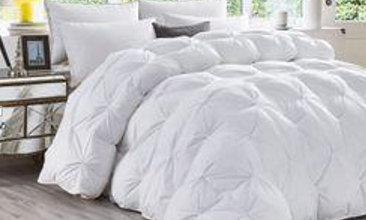Travel Tips to Avoid Bringing Bedbugs Home

Bedbugs are tiny, blood-sucking pests that can turn your dream vacation into a nightmare—especially if you accidentally bring them home. These pests are excellent hitchhikers, hiding in luggage, clothing, and even electronics. Once they infest your home, getting rid of them can be costly and stressful.
Fortunately, with some careful precautions, you can significantly reduce the risk of encountering bedbugs while traveling. Here are essential travel tips to help you avoid bringing these unwanted guests back with you.
1. Research Your Accommodation Before Booking
Before booking a hotel, hostel, or vacation rental, do some research to ensure it has a good reputation for cleanliness.
- Read Reviews: Check recent reviews on travel websites like TripAdvisor, Google, or Yelp. Look for mentions of bedbugs—guests often report infestations.
- Check Bedbug Registries: Some websites track bedbug reports in hotels. While not all infestations are reported, these registries can give you an idea of past issues.
- Choose Reputable Accommodations: Well-maintained hotels with strict cleaning protocols are less likely to have bedbug control ( væggelus bekæmpelse ) .
2. Inspect Your Room Upon Arrival
Before settling in, conduct a thorough inspection of your room. Bedbugs often hide in mattresses, furniture, and cracks in walls.
Where to Look:
- Mattress & Box Spring: Pull back the sheets and check the seams, tags, and corners for tiny brown or black spots (bedbug feces), shed skins, or live bugs.
- Headboard & Bed Frame: These are common hiding spots, especially in cracks and crevices.
- Furniture: Inspect upholstered chairs, couches, and drawers near the bed.
- Luggage Rack: Avoid placing your luggage on the bed or floor. Use a metal rack (less appealing to bedbugs) and inspect it first.
If you find signs of bedbugs, request a new room—preferably in a different part of the building—or consider switching hotels.
See also: Bryan Johnson’s VNS Tips to Boost HRV and Recovery
3. Keep Your Luggage Protected
Bedbugs can easily crawl into your suitcase, so take precautions to keep them out.
- Use Hard-Shell Luggage: Bedbugs have a harder time clinging to smooth surfaces compared to fabric suitcases.
- Pack in Sealable Plastic Bags: Store clothing and belongings in large ziplock bags or compression sacks to prevent bugs from getting inside.
- Keep Luggage Elevated: Never place your suitcase on the bed, couch, or carpet. Use a luggage rack (after inspecting it) or keep it in the bathroom (bedbugs are less likely to be on tile).
4. Minimize Clutter and Keep Belongings Organized
A cluttered room makes it harder to spot bedbugs and easier for them to hide in your belongings.
- Keep Clothes in Your Suitcase: Avoid using hotel drawers or closets unless necessary.
- Hang Items Up: If you must use the closet, hang clothes on hooks rather than leaving them on shelves.
- Limit Items on the Floor: Shoes, bags, and other items left on the floor can attract bedbugs. For more read https://vaeggelus-fri.dk/
5. Wash and Dry Clothes on High Heat After Travel
One of the best ways to kill any potential bedbugs is by exposing them to high heat.
- Wash Clothes Immediately: As soon as you return home, wash all clothing (even unworn items) in hot water (at least 60°C/140°F).
- Dry on High Heat: Tumble dry on the highest setting for at least 30 minutes—heat kills bedbugs at all life stages.
- For Non-Washable Items: Place shoes, bags, and delicate fabrics in a dryer on high heat or in a sealed plastic bag in the freezer for at least four days.
6. Inspect and Clean Your Luggage Before Bringing It Inside
Before bringing your suitcase into your home, take precautions to ensure no bedbugs are hiding inside.
- Vacuum Your Luggage: Use a vacuum cleaner to remove any potential bugs or eggs from seams and pockets.
- Wipe Down Hard-Shell Bags: Use a disinfectant wipe or rubbing alcohol to clean the exterior.
- Store Luggage Properly: Keep suitcases in a garage, basement, or sealed plastic bin—not in your bedroom or closet.
7. Be Cautious with Secondhand Items
Bedbugs aren’t just found in hotels—they can also hitch a ride on used furniture, clothing, or luggage.
- Inspect Thrifted or Used Items: Before bringing anything secondhand into your home, check it thoroughly for signs of bedbugs.
- Wash or Heat-Treat Used Clothing: Always clean secondhand clothes before wearing them.
- Avoid Picking Up Free Furniture: Discarded couches, mattresses, or chairs may harbor bedbugs.
8. Know the Signs of a Bedbug Infestation at Home
Even with precautions, bedbugs can still find their way in. Early detection is key to preventing a full-blown infestation.
Warning Signs:
- Bite Marks: Small, itchy, red bites in a line or cluster (often on arms, legs, or neck).
- Blood Stains: Tiny rust-colored spots on sheets or mattresses.
- Dark Spots: Bedbug feces look like small black or brown dots on bedding or furniture.
- Musty Odor: A strong, sweet, musty smell can indicate a large infestation.
If you suspect bedbugs, contact a pest control professional immediately.
Final Thoughts
Bedbugs are a traveler’s worst nightmare, but with vigilance and proper precautions, you can greatly reduce the risk of bringing them home. Always inspect your accommodation, protect your luggage, and clean everything thoroughly upon returning. By staying proactive, you can enjoy your trips without worrying about unwanted souvenirs.



